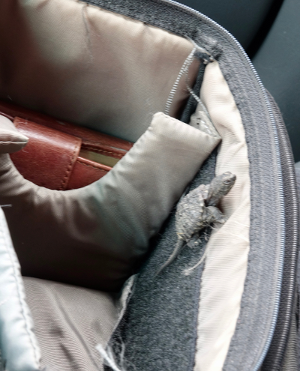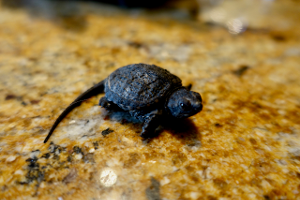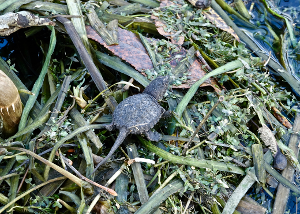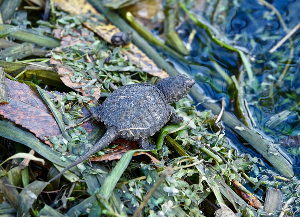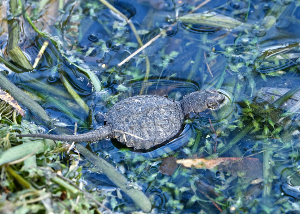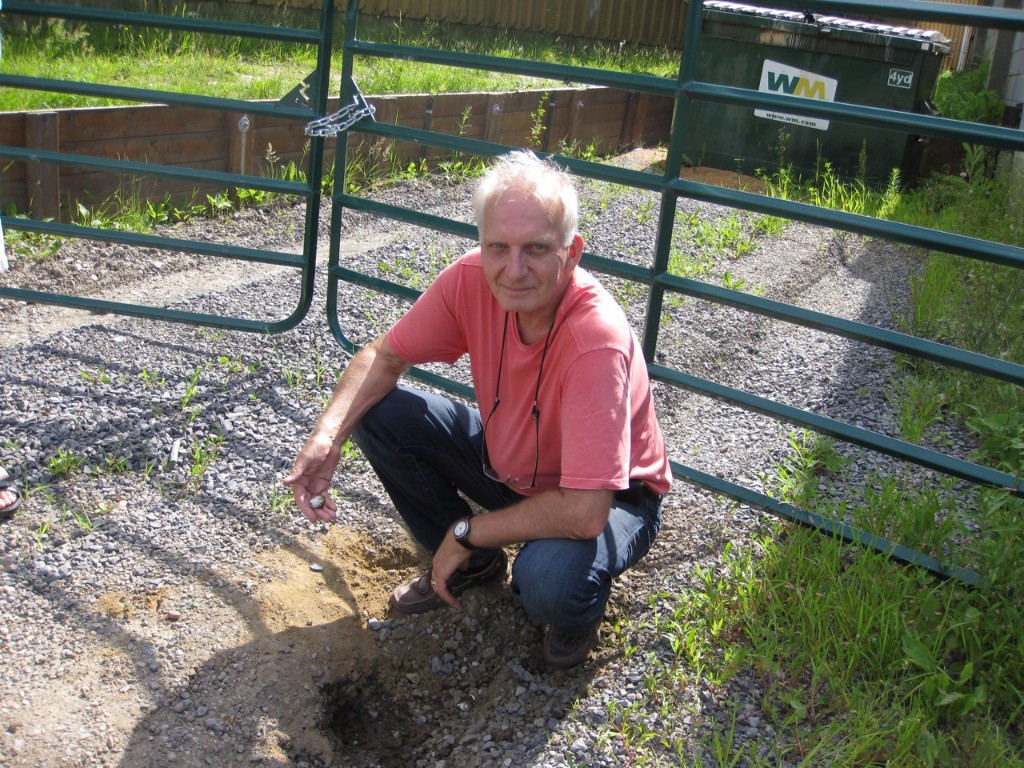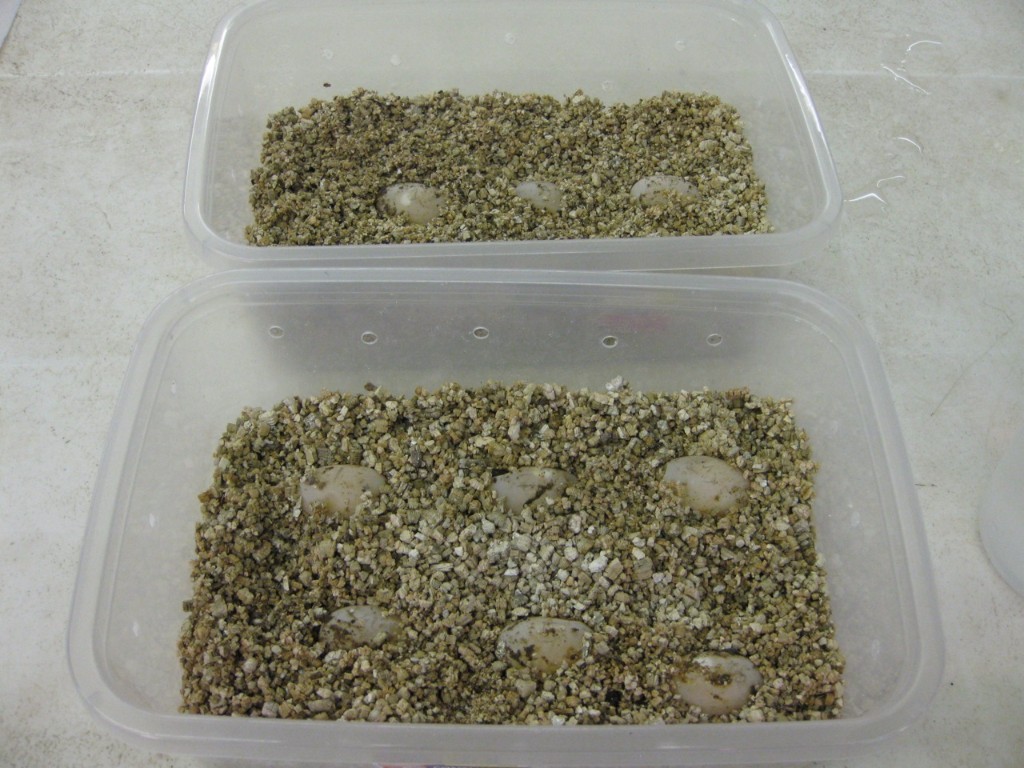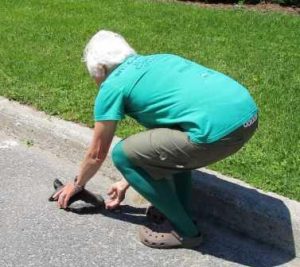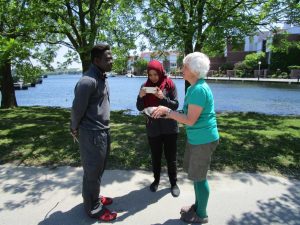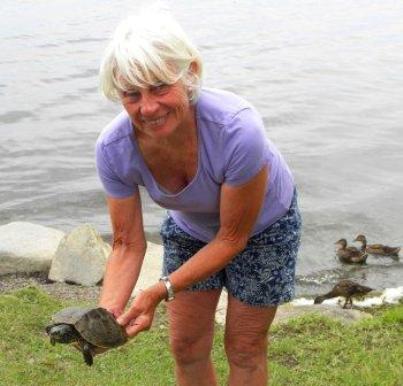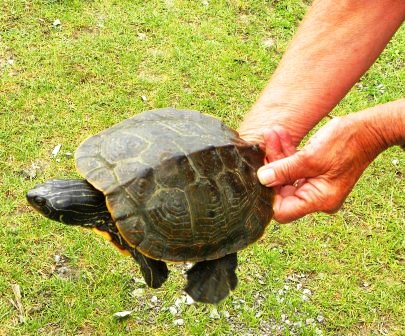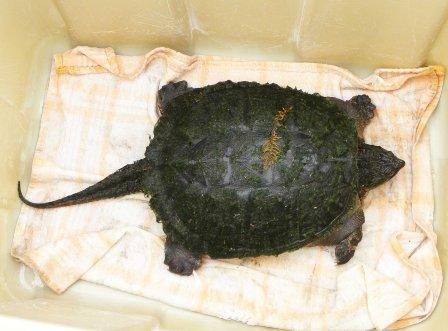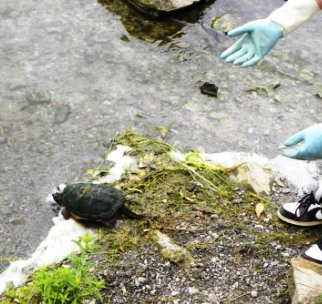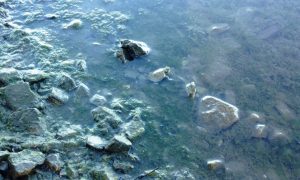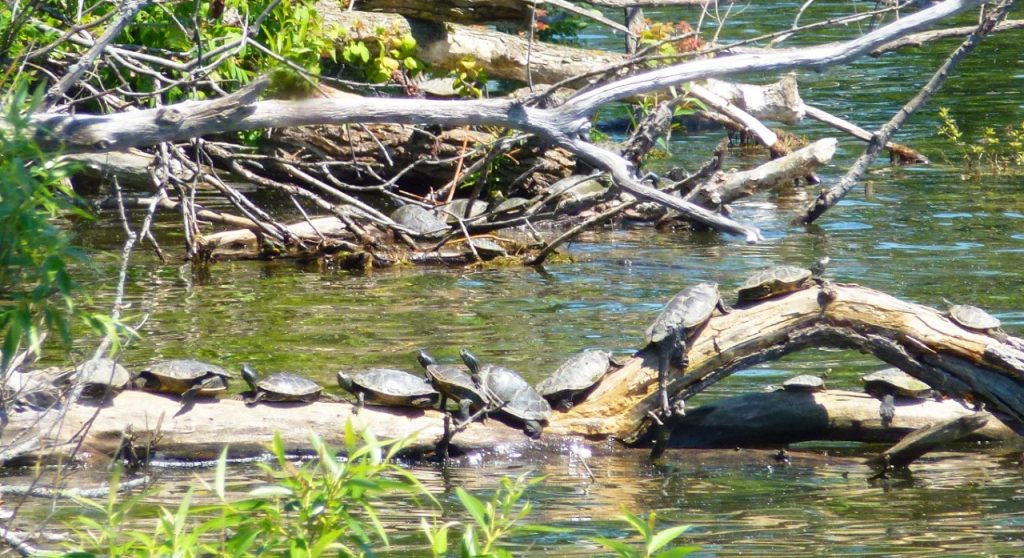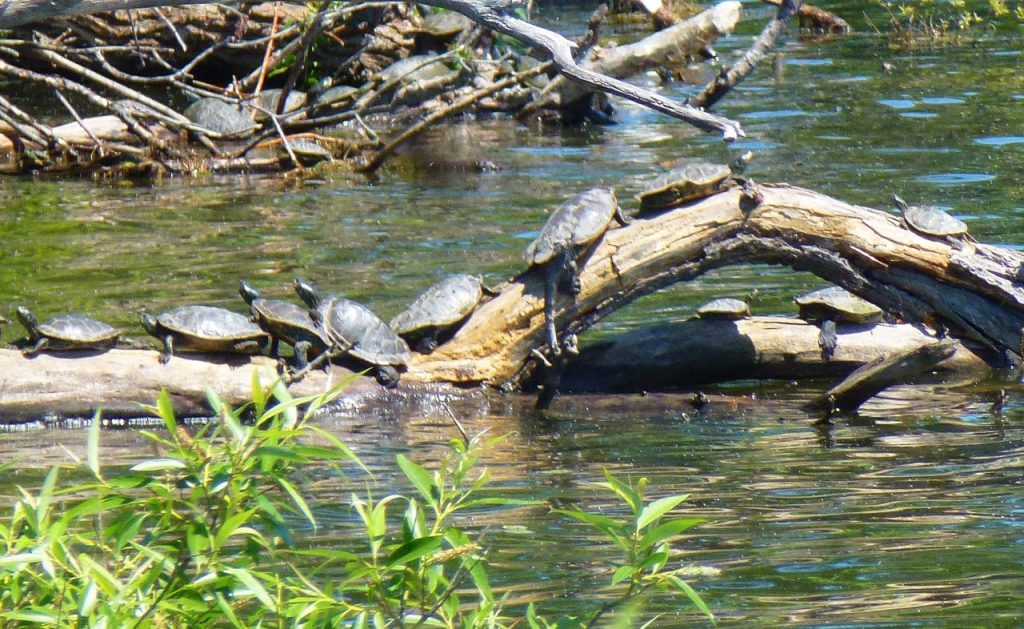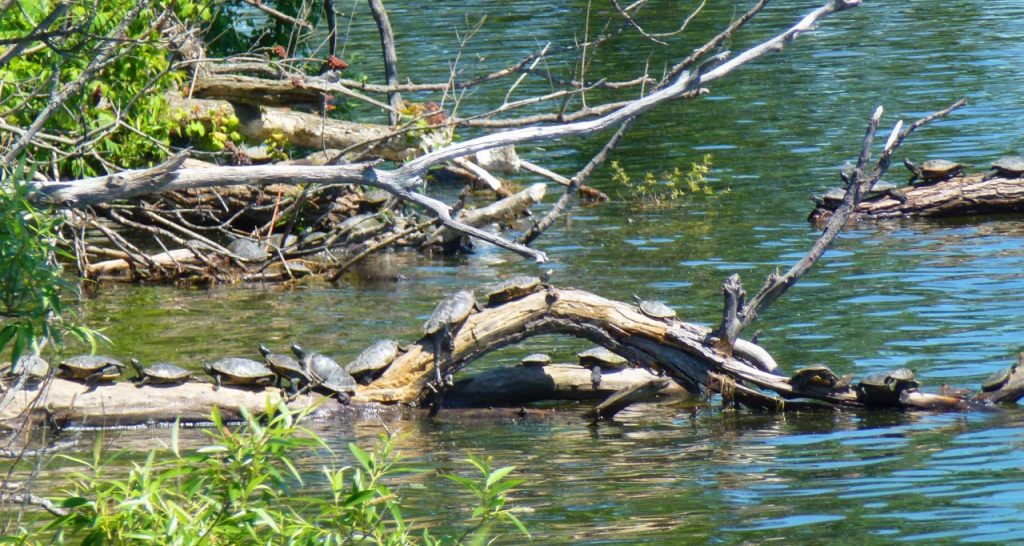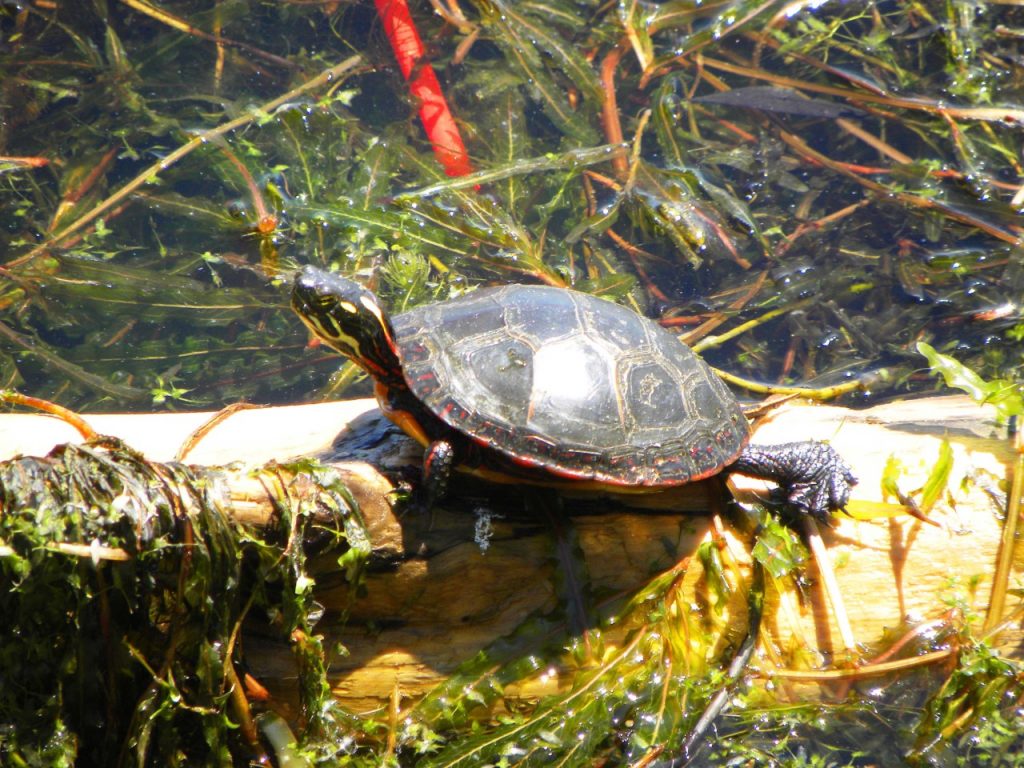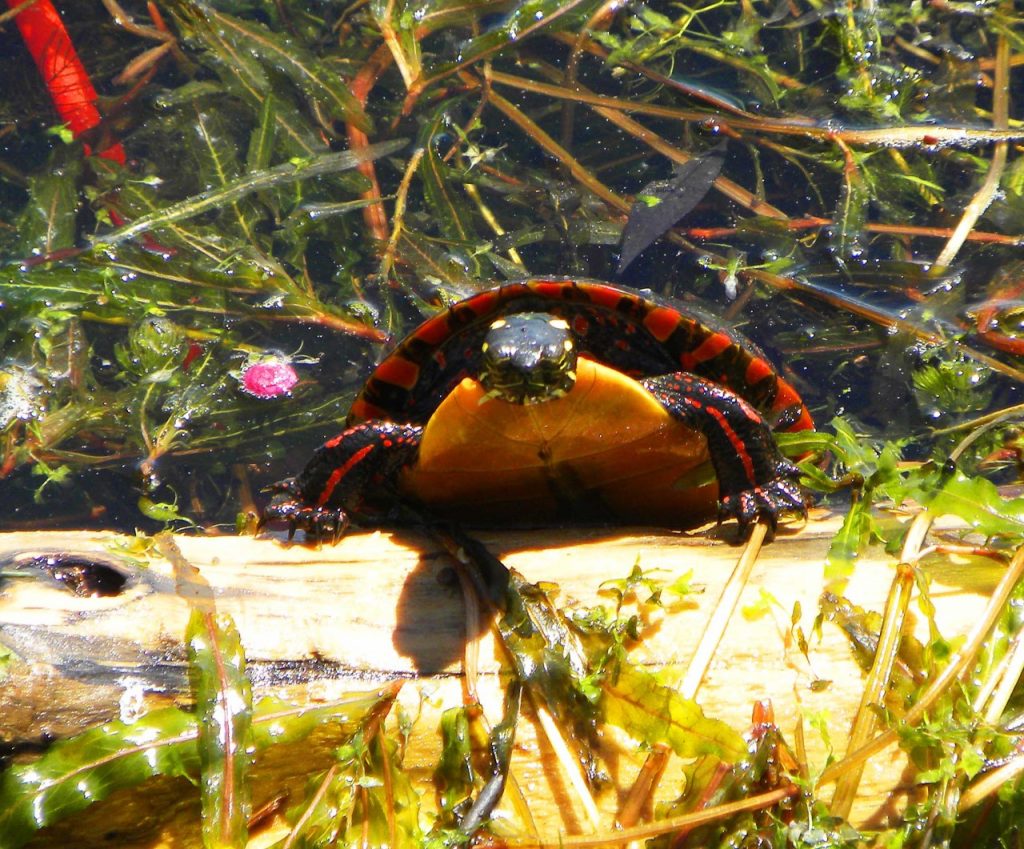TURTLE PROJECTS, 2019 SEASON
a) Freshwater Future Grant for Radio-Telemetry and Possible Impacts on the Third Crossing:
We received a grant or $1500 USD in the spring of 2018 to do a radio telemetry study for 2 turtles in Kingston’s Inner Harbour – attaching antennae to two turtles and checking their position with a receiver over the course of the summer. The Ontario Ministry of Natural Resources and Forestry insisted that we increase our sample size to 6 and we also had to secure the appropriate permits for the work. The result was the need for an extension of the grant until Dec, 2019. We were grateful for the cooperation and support of Dr. Stephen Lougheed of Queen’s University to help us obtain the necessary permits through Queen’s and for the opportunity for our hired student/consultants to work with Lesley Rudy, one of our previous volunteers who is now working on her M. Sc. with Steve Lougheed. The results of the work have been surprising. We now know that many of the turtles go up to Kingston Mills probably to hibernate there. We are grateful that Matt and Kenny put together the following letter to the City’s Third Crossing Team documenting their findings. Most certainly the city will need to take their findings into account. We are also extremely grateful for their very professional work creating capture/release protocols, collecting and inputting the data, and creating wonderfully descriptive visuals.
“FKIH radio telemetry observations of four female Northern Map Turtles suggest that the reach between Highway 401 upstream to the Kingston Mills dam is a primary overwintering site for Map Turtles captured in the Inner Harbour in July and August. Prior to the radio-telemetry study and incidental observations by boat, FKIH suspected that the primary overwintering area for Map Turtles was somewhere in the river south of Belle Park, close to the Davis Tannery property as indicated in the Third Crossing Detailed Impact Assessment (DIA). This had been inferred based on walking surveys documenting concentrations of basking Map Turtles at the Tannery shoreline in April at the beginning of the active season. Because of the new data we have collected, we now suspect that most Map Turtles in the Inner Harbour must traverse the proposed Third Crossing site in late summer or fall and again in early spring in order to migrate to and from their primary overwintering site. With the third-crossing being directly in their route, we cannot be sure how this will negatively affect the seasonal movements of this species at-risk.
Reptile & Amphibian Conservationist Research Consultant, FKIH
www.reptileandamphibianadvocacy.com
PhD. Candidate, Boreal Ecology, Laurentian Univ.
kennybruelland@gmail.com
keevilm@gmail.com
613-483-6929 : 705-618-4453
b) Lesley Rudy’s Nest Study 2018/2019/2020 and Demographic Study 2019/2020
2018 nests checked throughout April-June 2019 for overwintering hatchlings
2018 nests excavated in June/July 2019 to determine success/outcome
New (2019) nests identified (with help from Kenny and Matt) and sensors placed in June/July. 33 nests are in the study in park and surrounding area. There are also 10 nests for comparison in rural locations.
2019 nests checked from mid-August to early November. 9 nests with 2-11 hatchlings each emerged this fall.
Will repeat in 2020.
Plan to collaborate on international nest-site selection study.
Goals are to determine success rate, emergence timing and hopefully detect cues that might trigger emergence; and to compare these findings with other locations.
Demographic study:
First year 2019
Lots of help from Kenny and Matt, thank you!
Over 100 unique turtles identified and marked.
Will capture again next year and look for re-captures.
Goal is to estimate population size and structure.
Lesley will be happy to discuss results and their potential meaning in more detail when more data is available and has been properly analysed, likely in 2021.
c) Citizen-Science Turtle Monitoring, 2019
d) Mark/Release/Recapture Protocol
Turtle Initiatives: 2016-2018
Mapping the Map Turtles – video
October 2017
Snapper Hatchlings, October 24th, 2017,
Photos by Martine B.
The little turtle wakes up in my camera bag…
Release of my new friend
July 2017
Eggs Rescued and Incubated
Huge thanks to local hero Ric Barr for alerting us to a nest located near his business at the National Grocer’s Building where heavy trucks might have crushed the eggs. Ric contacted Susan Irving at Sandy PInes Wildlife Centre in Napanee and she came out to harvest the eggs and take them for incubation. July, 2017
Rescuing a Northern Map Turtle
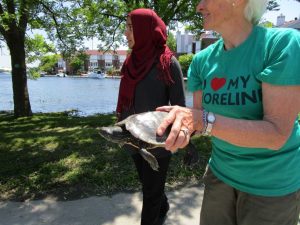 Egg-laying Northern Map turtle at Doug Fluhrer Park.
Egg-laying Northern Map turtle at Doug Fluhrer Park.
Mary Farrar rescues the turtle from being run over – June 2017.
Turtle Release at Doug Fluhrer Park
July 2016
Doug Fluhrer Park recently welcomed home 4 adult turtles (2 Northern Map turtles and 2 Snapping turtles) from the Inner Harbour who were returning to their homes after a stint of rehabilitation at Sandy Pines Wildlife Centre in Napanee. Mary Farar assisted Susan Irving, a volunteer with Sandy Pines, with the releases.
These turtles had been brought to Sandy Pines for care and rehabilitation following injurious encounters (usually vehicle related) with humans. These turtles were happy that their stay at Sandy Pines was relatively “short” (having been injured earlier this spring). A significant number of turtles with more serious injuries can take a full 12 months to recover sufficiently to be able to return to the wild. Sandy PInes has remarkable success with saving turtles with serious, life threatening, injuries.
The Ministry of Natural Resources requires that rehabilitated animals are released back into the environment within a mile of where they were found.
If you are interested in learning more about turtle rehabilitation or other facets of the care that Sandy Pines provides to well over 2,500 injured and orphaned animals every year, you may contact Susan at menardsa@sympatico.ca
September 2016
Susan Irving of Sandy Pines Wildlife Centre released five baby Northern Map turtles into the water in Doug Fluhrer Park. One turtle is quite visible to the right of the central dark rock. Two other tiny heads are visible in the water a bit further out.
Protecting the Turtles
The Friends of Kingston Inner Harbour are helping protect Inner Harbour turtles by covering nests containing laid eggs and also making a record of the turtles people are seeing. Contact 613-572-1246 and/or harbourturtles@gmail.com
Turtle Awareness Evening was held on June 7th, 2016. For stories and photos see Turtle Awareness Evening, Snapd Kingston July 2016, and Turtles’ Best Friend, Kingston This Week, June 30, 2016.
An informal get-together took place in Doug Fluhrer Park on July 12th.
See Chairs for Turtles – a video of the event by David McCallum.
Inner Harbour species are mainly Painted, Northern Map and Snapping. For pics, visit
Toronto Zoo | Adopt A Pond | Resources
Below are some amazing photos of turtles sighted at the Inner Harbour.
Photographer: Herb Helmstaedt
For more photos of turtles sighted this spring please go to the Gallery
